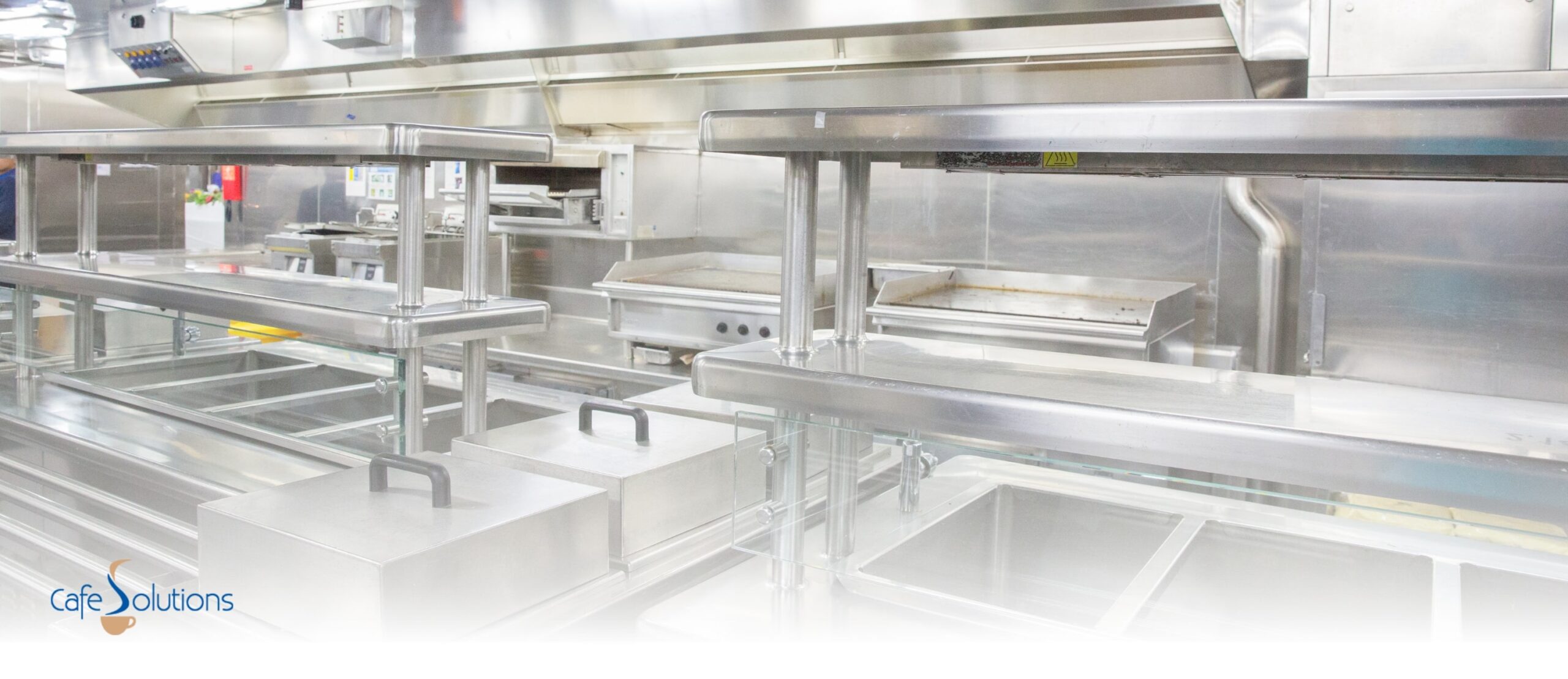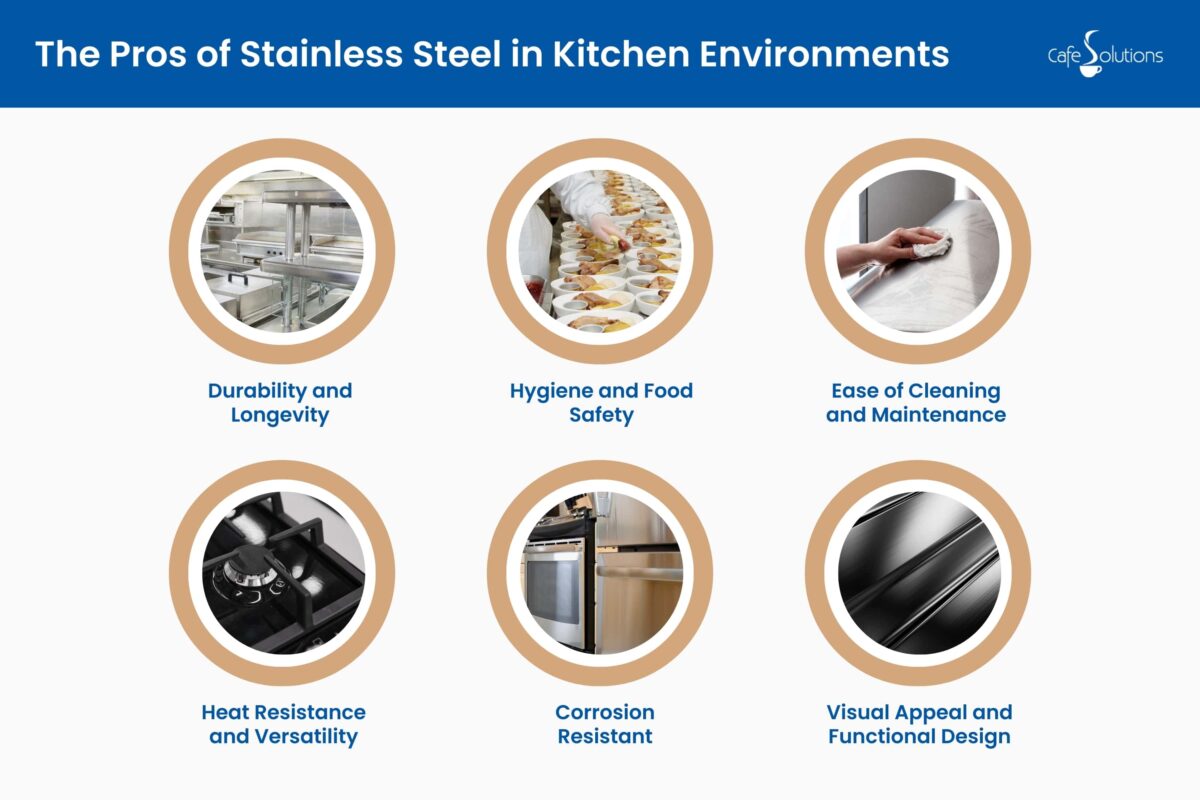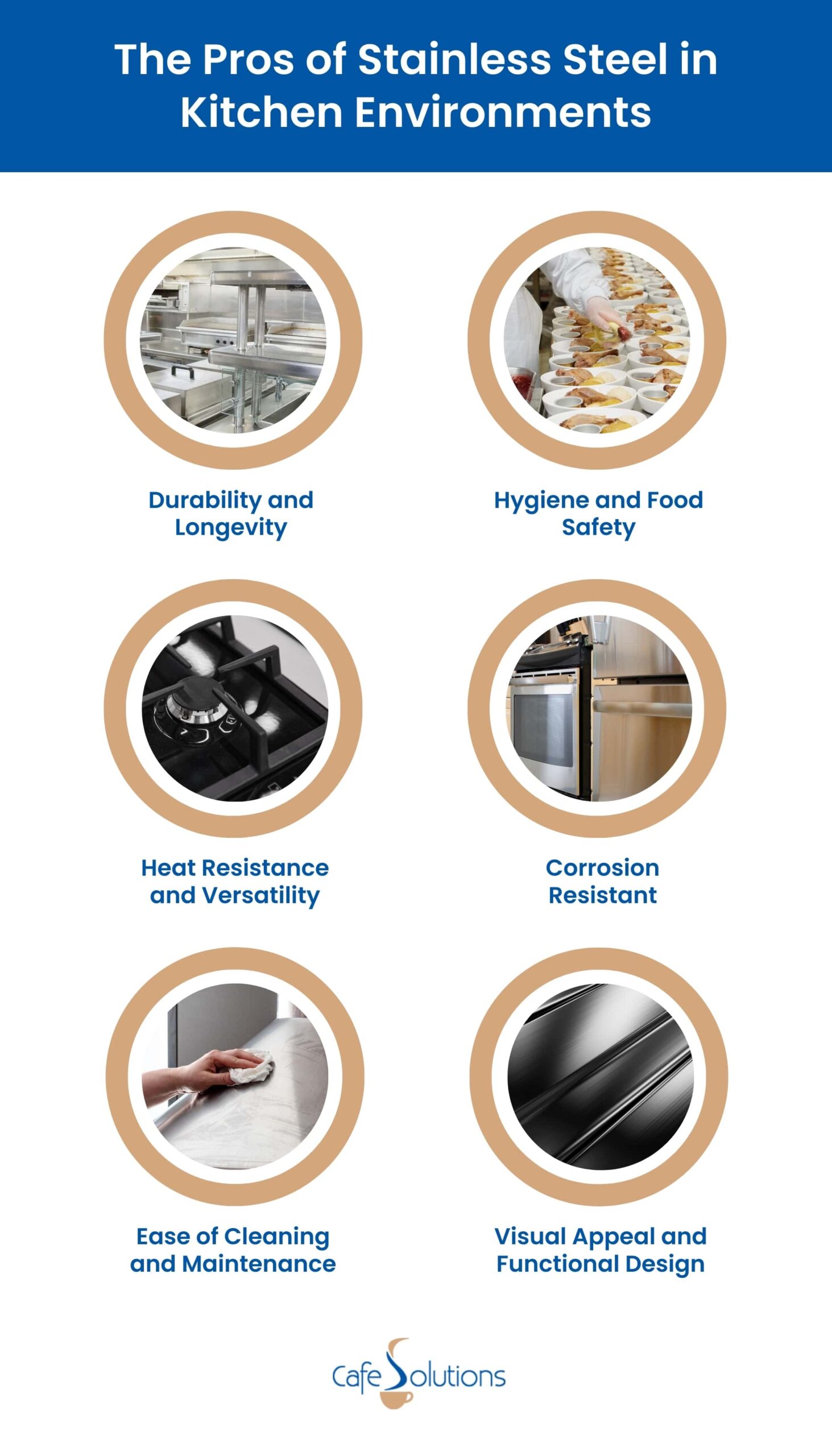Your cart is currently empty!
Why is Stainless Steel Used in Kitchens?

Stainless steel is used in kitchens for its exceptional durability, hygiene, and ease of maintenance. It’s just what you need in high-demand food-prep spaces. Its non-porous surface prevents bacteria growth, ensuring a high level of food safety.
Stainless steel surfaces are more than just sleek and pretty. They stand up to heat, are corrosion resistant, and can handle anything you throw at them. It’s an excellent investment that maintains appearance and functionality for many years. Let’s find out more about this miracle material!
The Pros of Stainless Steel in Kitchen Environments


Stainless steel is favoured in kitchens for good reason. Its exceptional properties outshine those of any other material available. Plus, stainless steel offers several advantages that make it a top choice for kitchen use.
Durability and Longevity
Industry kitchens are tough on equipment. The impact of heavy pots and pans, the scratches and dents of daily operation… That’s why stainless steel in kitchen environments is so valuable. It’s hardy, resists rust and stains, and looks good for years.
With stainless steel benches, sinks, and appliances in your kitchen, you won’t be replacing things as often. This will save you a good bit of money in the long run.
Hygiene and Food Safety
Australia has strict food safety standards that industry kitchens must follow. This ensures that the food they serve is safe for consumption.
One of the biggest benefits of stainless steel is its smooth, non-porous surface. It prevents food particles from becoming trapped where bacteria and mould could multiply. This lowers the risk of food contamination and foodborne illnesses.
Ease of Cleaning and Maintenance
The smooth surface of stainless steel allows for quick and efficient cleaning. Staff can wipe away spills, food residue, and grease with minimal effort. This saves valuable time in a fast-paced kitchen environment!
Stainless steel’s resistance to stains and streaks helps maintain a visually clean kitchen. It can be cleaned with mild detergents, lowering the risk of food-contaminating chemical residue on surfaces.
Heat Resistance and Versatility
Why is stainless steel used in kitchens so often? It can handle high temperatures (up to 900 °C) without warping or expanding. This makes it perfect for stovetops, ovens, and other hot kitchen equipment.
For freezers that operate at chilling lows (-18 °C), stainless steel maintains its integrity and strength. It’s remarkably versatile for a wide range of industry kitchen needs.
Corrosion Resistant
Stainless steel’s non-corrosiveness protects against acids from fruits, fermented foods, red meat, and processed meats. It can also withstand the harsh salty air of coastal kitchens, resistant to rust that may affect other metals.
This ensures that kitchen equipment keeps working well. It also keeps its appearance, making the kitchen look professional and inviting.
Visual Appeal and Functional Design
Stainless steel in kitchen spaces has a bright, clean look that shows professionalism and commitment to hygiene. Something all industry kitchens should have!
Its sleek, contemporary look also blends seamlessly into modern design. It’s an easy way to enhance the visual appeal of kitchens with customer-facing areas! This can create a positive impression of the café or restaurant.
What are the Most Common Grades of Stainless Steel in Kitchens?
The most common grades of stainless steel for kitchen use are Grade 304 and Grade 316. Both offer strong resistance to corrosion, but suit different environmental needs.
Grade 304 Stainless Steel
304 stainless steel is the most popular grade of stainless steel for kitchens. It contains 18% chromium and 8% nickel, which offers excellent resistance to corrosion and rust. It’s tough, versatile, and affordable! In other words, perfect for everything from countertops and benches to the best stainless steel drop in sinks.
Its adaptability also makes it suitable for a variety of kitchen equipment. Think pots, pans, appliances, and cookware. 304’s resistance to the environment and easy maintenance needs make it a popular choice in commercial and domestic kitchens.
Grade 316 Stainless Steel
316 stainless steel takes corrosion resistance to the next level. It contains 16 to 18% chromium and 10 to 14% nickel, but the shining star is 2 to 3% molybdenum, which gives it extra-strength corrosion resistance.
Stainless steel grade 316 is the top choice for demanding environments. It’s most commonly used in:
- Marine environments, due to its superior resistance to seawater and salt exposure.
- Medical and surgical instruments/implants, because of its excellent cleanliness and non-reactive properties.
- Food processing equipment, as it doesn’t react with acidic foods and is easy to clean, ensuring excellent hygiene.
- Chemical processing equipment, since it can withstand harsh chemicals and high temperatures.
- Architectural components in coastal areas, as it’s resistant to corrosion from sea spray.
- Pharmaceutical and laboratory equipment, for its cleanliness and corrosion-resistance.
Why Choose Café Solutions for your Stainless Steel?
Want to work with Café Solutions for your stainless steel kitchen needs? You’re choosing a partner committed to quality, expertise, and value. Our products are carefully crafted from high-grade stainless steel, giving you durability that can withstand the bangs, scratches, and spills of commercial kitchen environments.
With years in the industry, our team brings unparalleled knowledge and experience of using stainless steel in kitchen environments. Along with our competitive pricing, our dedication to quality makes Café Solutions the ideal choice for equipping your kitchen with the best stainless steel solutions available.
Back to top: Why is Stainless Steel Used in Kitchens?
